The Uru or Uros are an indigenous self-identified ethnic group of people of Peru and Bolivia. They have lived for centuries on about 40 self-fashioned floating islands in Lake Titicaca near Puno in southern Peru.
At some point in the distant past (possibly as far back as 1700 BC), a tribe of comparatively dark-skinned people migrated out of the Amazon region and found themselves on the shores of Lake Titicaca. Oppressed by the local Inca population and unable to find land of their own, they moved onto the lake on small floating islands that they constructed from layers of cut totora, a thick reed that grows abundantly in the high-altitude fresh water. The Uros also made boats (balsas) from bundles of dried totora reeds. There, in the middle of frigid Titicaca, unmolested by their neighbors, the Uros found relative peace and scraped together a living as fishermen and bird hunters for centuries while living one of the most unusual lifestyles on the planet.
The Inca considered the Uros sub-human and never bothered trying to subdue them; the Spaniards thought them indolent and dirty and beneath contempt; and the local indigenous Aymara still dismiss them as dim-witted. But their culture managed to survive. The purpose of the island settlements was originally defensive, and if a threat arose they could be moved. The largest island retains a watchtower constructed almost entirely of reeds. The larger islands house about ten families, while smaller ones, only about 20-30 meters wide, house only two or three families.
The churning of the water causes the dense roots of the totora plants to intertwine and form khili, a natural layer about one to two meters thick that supports the islands. They are anchored with thick ropes to large posts driven into the bottom of the lake. Each human step on an island sinks in about 2-4" depending on the density of the reeds underfoot. As the reeds dry, they break up more and more as they are walked on. As they break up and moisture seeps in, they rot at the bottom, and a new layer must be added to the top every three to six months. This is especially important in the rainy season when the reeds rot much faster. So it is a lot of work to maintain the islands. An island lasts about thirty years.
The Uros islands are 3,810 meters (12,500 feet) above sea level, and about five miles northeast of Puno. Around 2,000 descendants of the Uros were counted in the official 1997 census with many having moved to the mainland. A study in 2010 counted 272 families with 754 individuals still living on 29 islands in the lake.
As the islands have become more popular with tourists, residents have less time to maintain the surface, so they have to work harder and longer to keep up with the visiting tourists and with the maintenance of their islands. Although tourism provides financial opportunities for the natives, it means more work and challenges the Uros’ traditional lifestyle.
Food is generally cooked over fires on piles of stones. To relieve themselves, tiny ‘outhouse’ islands are near the main islands, although some of the larger islands have outhouses located away from the dwellings. The rotting ground root absorbs the waste.
Much of the Uros’ diet and medicine also revolve around the same totora reeds used to construct the islands. When a reed is pulled, the white bottom is often eaten for iodine. This prevents goiters (enlargement of the thyroid gland), to which the Uros are susceptible.
The Uros people fish for ispi, carachi and catfish as well as trout, which was introduced to the lake from Canada in 1940, and kingfish, which was introduced from Argentina. Uros also hunt birds such as seagulls, ducks and flamingos, and graze small numbers of cattle on the islets. They barter fish and totora reeds on the mainland in Puno to get products they need, such as quinoa (a grain plant of the Andes), cooking oil, and other foods. On some of the larger islands, they operate craft stalls aimed at tourists.
The community's Ccapi Uros School is on the island of Negrone. A preschool was started in 2010 and has experienced significant growth since them. To accomodate the additional students, a decrepit "warehouse" is being used as a classroom for the 3 to 4-year-olds. It's too small, poorly lit, and often floods during the rainy season. There is also no outside play area for the younger children. Also, due to the increased number of students, the kitchen and dining area is no longer adequate. The current dining area has a capacity of 40 children, but there are currently 72 children in the school, so the preschoolers return to their classroom to eat lunch.
With a donation from David & Betsy Ahl, Operation Blessing plans to build a new preschool with an outside play area (on the reeds!), as well as a new kitchen and dining area. The preschool will be built on stilts to protect from flooding. Local women will use the new kitchen to provide a daily, nutritious meal to the children to help combat malnutrition while the new dining area will provide seating for all the children in the school. The school will also receive new furnishings, Bibles, and materials for Christian learning to be taught by volunteers from a local church twice a month. Hopefully, this will help the children to grow mentally, physically, and spiritually to become better equipped for their future lives.
Click on any image for a larger image. (Photos by David Ahl)
|
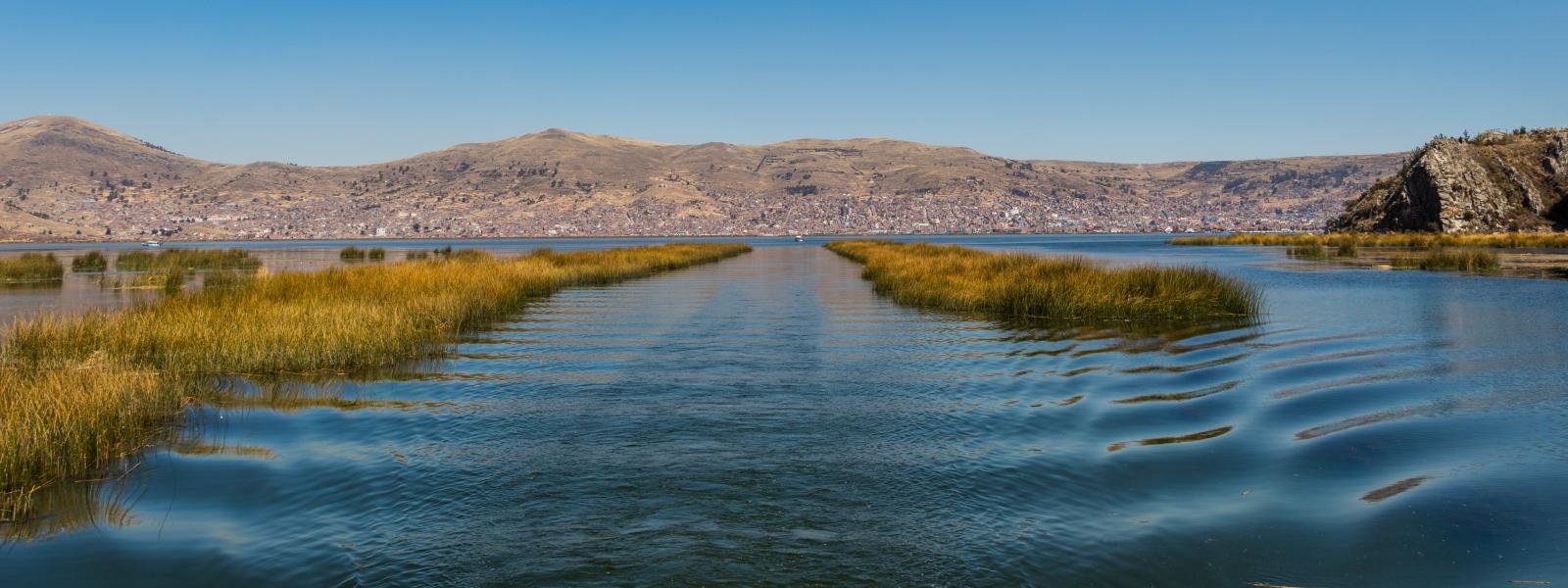 Leaving the port of Puno for the Uros floating islands about 5 miles away in Lake Titicaca, Peru. Leaving the port of Puno for the Uros floating islands about 5 miles away in Lake Titicaca, Peru. |
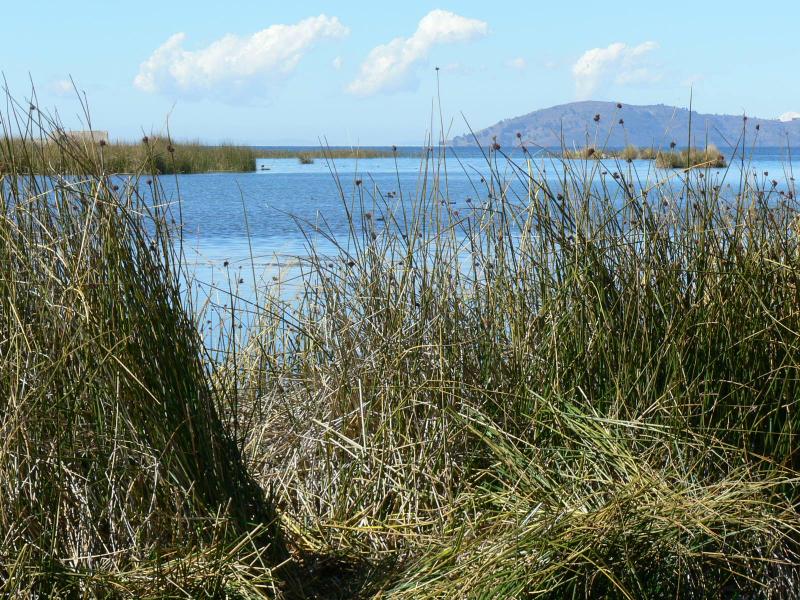 Totora reeds are everywhere nearing the islands. Totora reeds are everywhere nearing the islands. |
| |
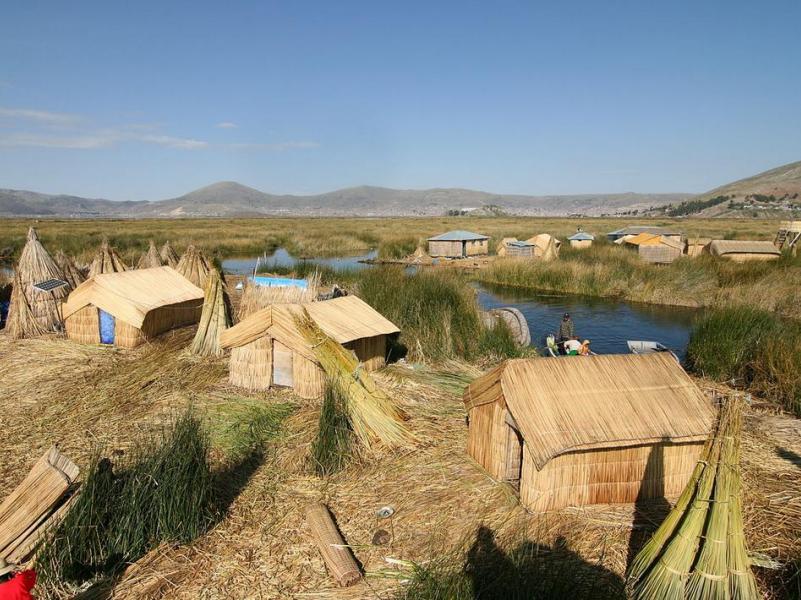 One of several Uros islands that caters to tourists. [Stock photo] One of several Uros islands that caters to tourists. [Stock photo] |
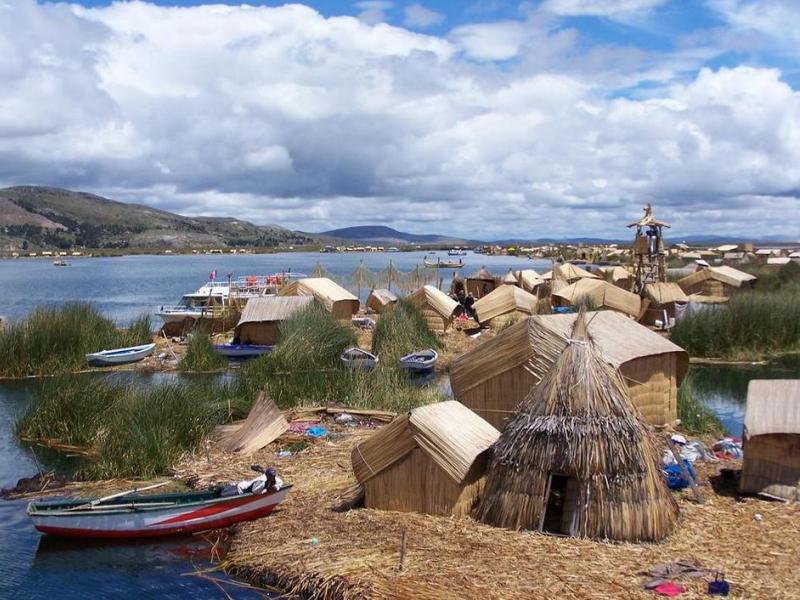 Another island selling items to tourists. [Stock photo] Another island selling items to tourists. [Stock photo] |
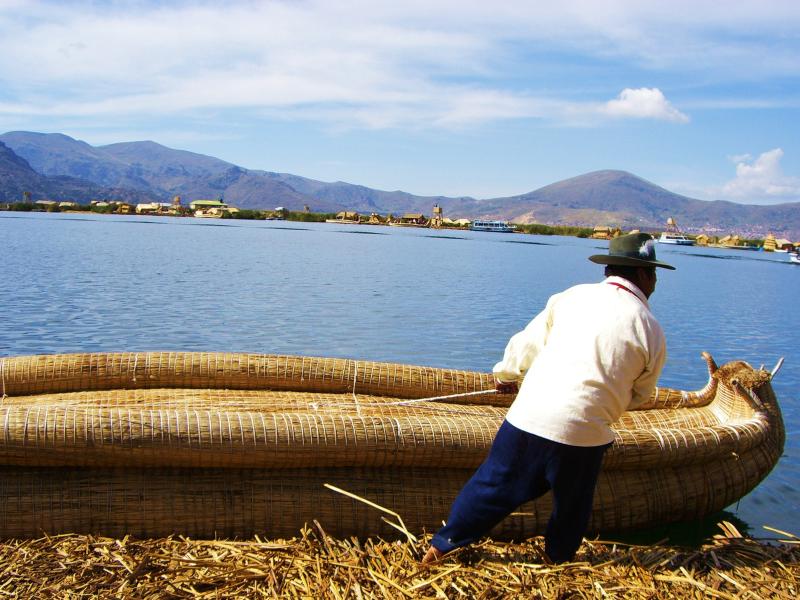 Uros people build boats of the same Totora reeds. [Stock photo] Uros people build boats of the same Totora reeds. [Stock photo] |
| |
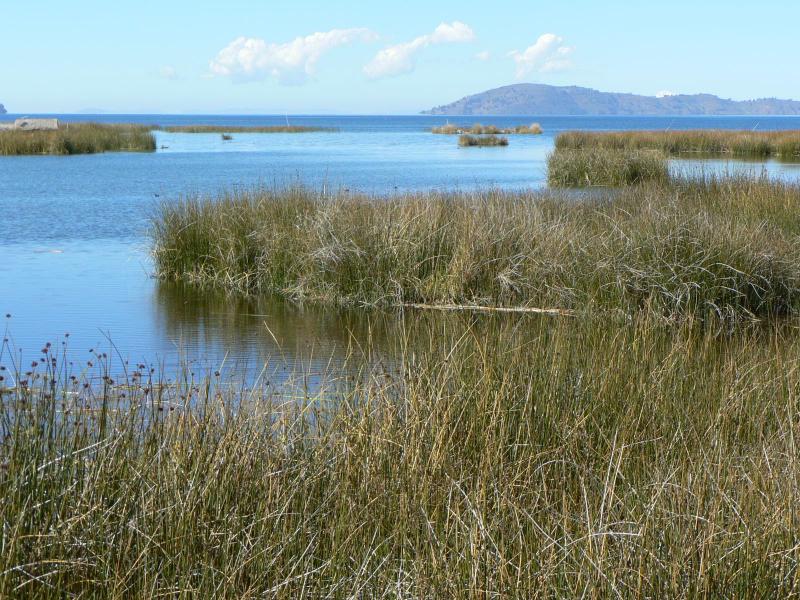 Approach to Negrone islands is cluttered with reeds. Approach to Negrone islands is cluttered with reeds. |
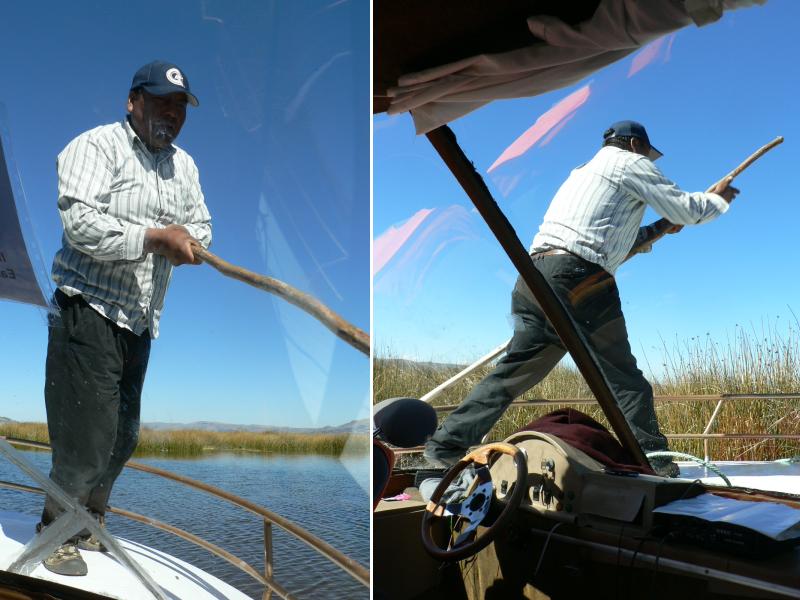 Boat must be poled into dock on Negrone island. Boat must be poled into dock on Negrone island. |
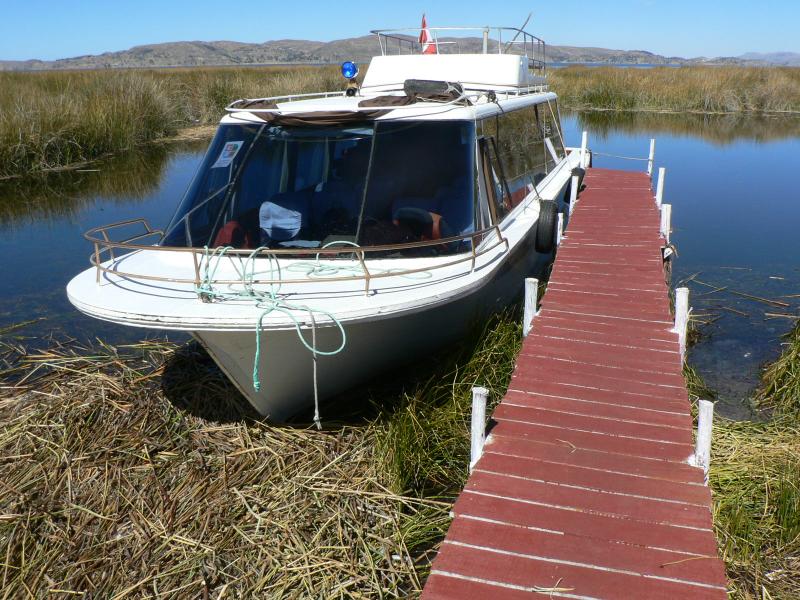 Tied up at the Negrone island dock. Tied up at the Negrone island dock. |
| |
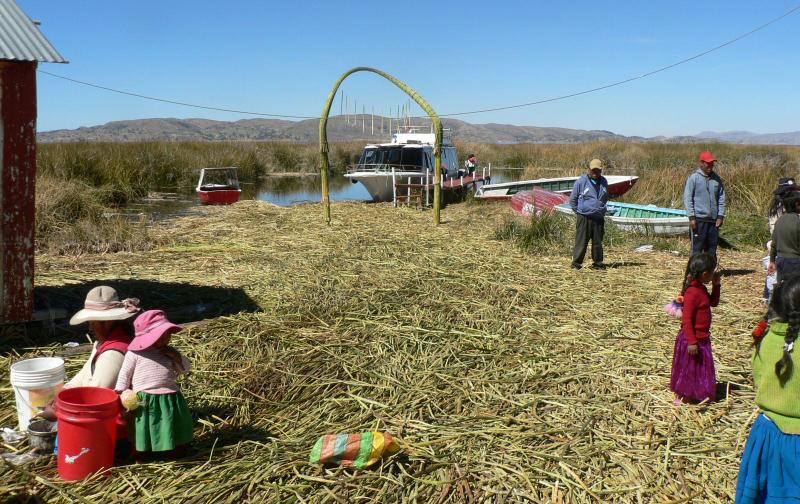 Activity in the area near the dock on Negrone island. Activity in the area near the dock on Negrone island. |
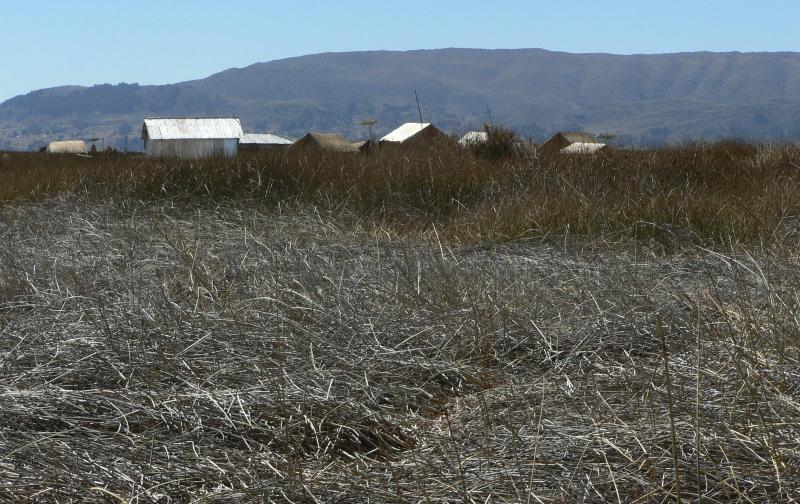 Homes on the far side of the island. Homes on the far side of the island. |
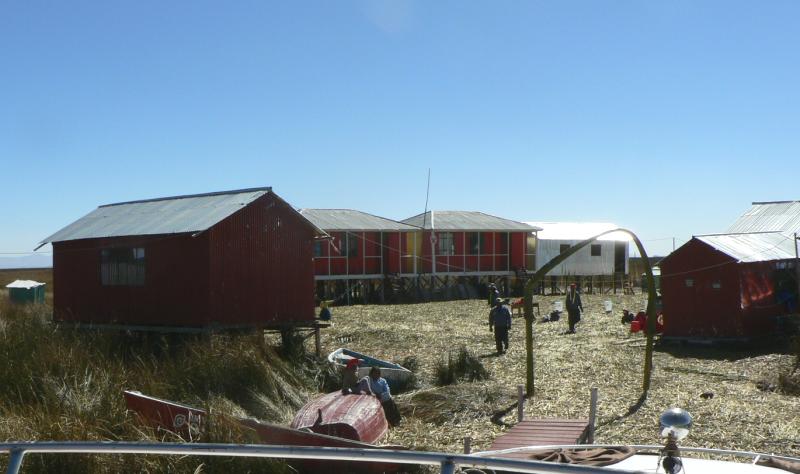 School buildings are arranged in a quadrangle around a central playing field of reeds! School buildings are arranged in a quadrangle around a central playing field of reeds! |
| |
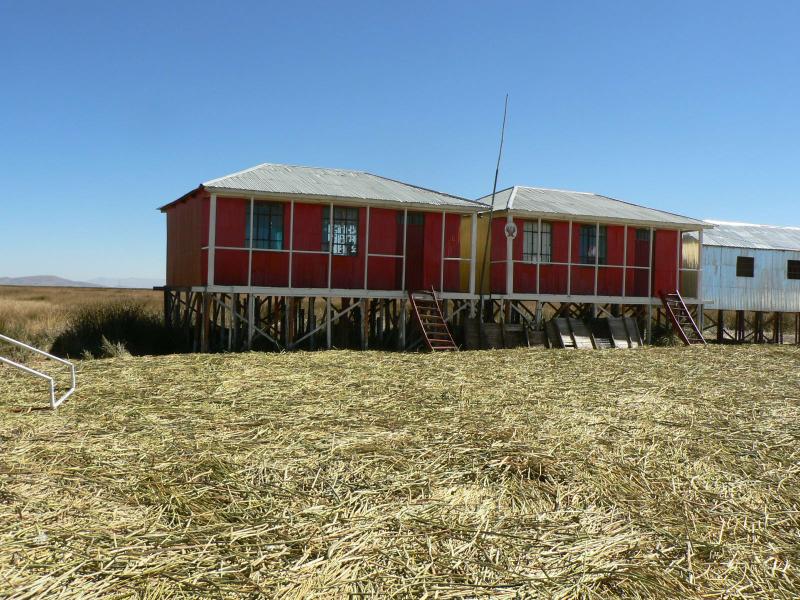 Two classroom buildings for Grades 3 to 6. Two classroom buildings for Grades 3 to 6. |
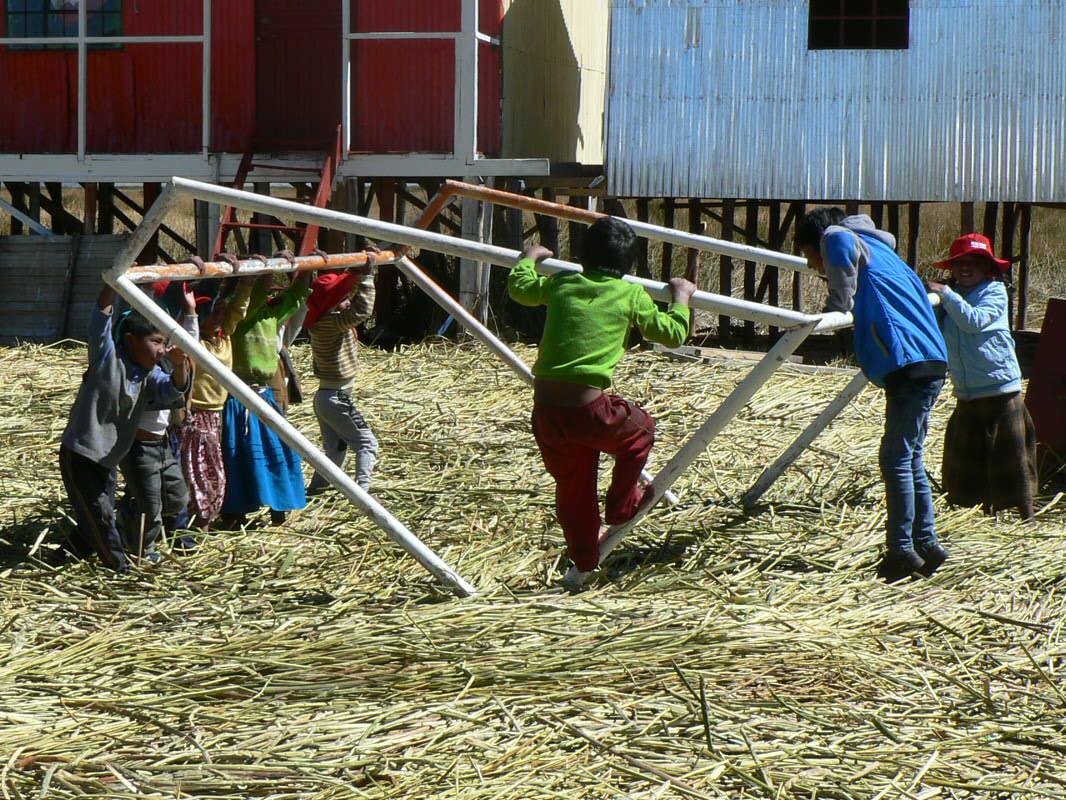 Kids uses the soccer goal as a makeshift teeter-totter. Kids uses the soccer goal as a makeshift teeter-totter. |
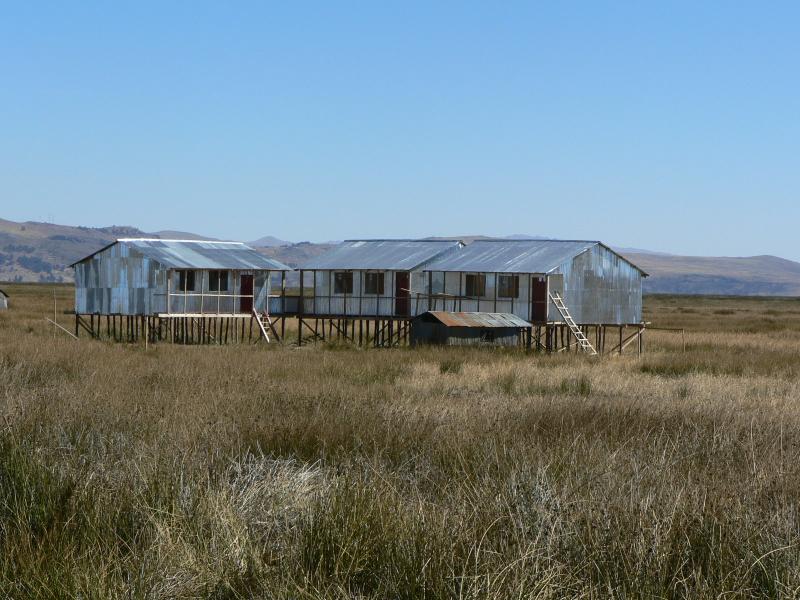 Three new buildings for secondary level classes. Three new buildings for secondary level classes. |
| |
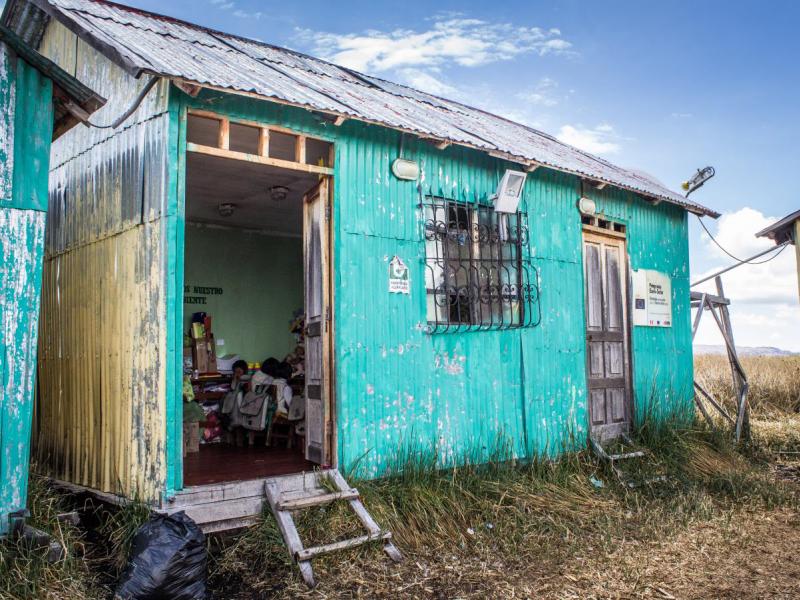
Decrepit warehouse is used for a preschool classroom. |
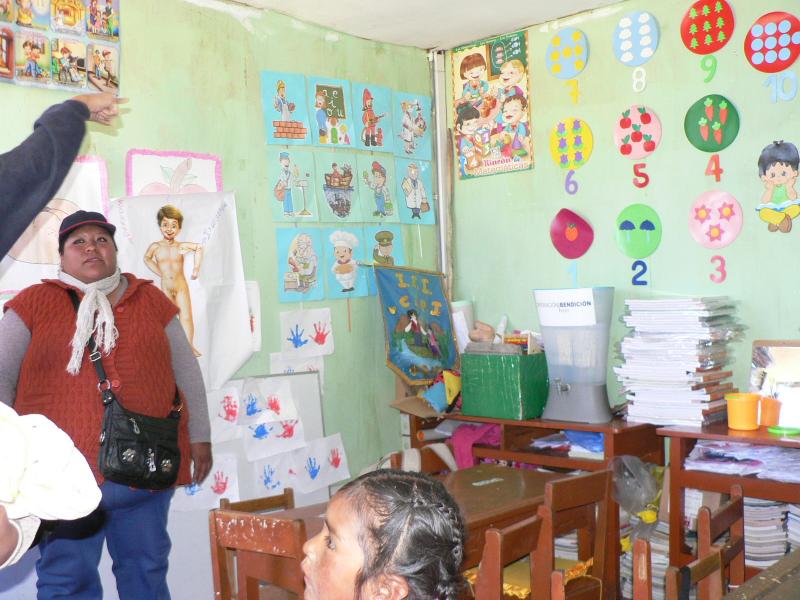 Inside the preschool classroom. Inside the preschool classroom. |
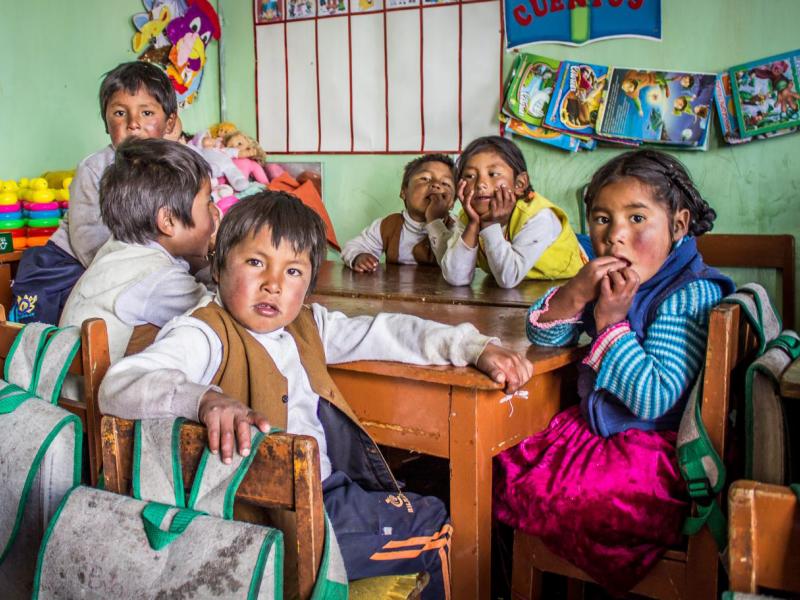 Children in the preschool classroom. Children in the preschool classroom. |
| |
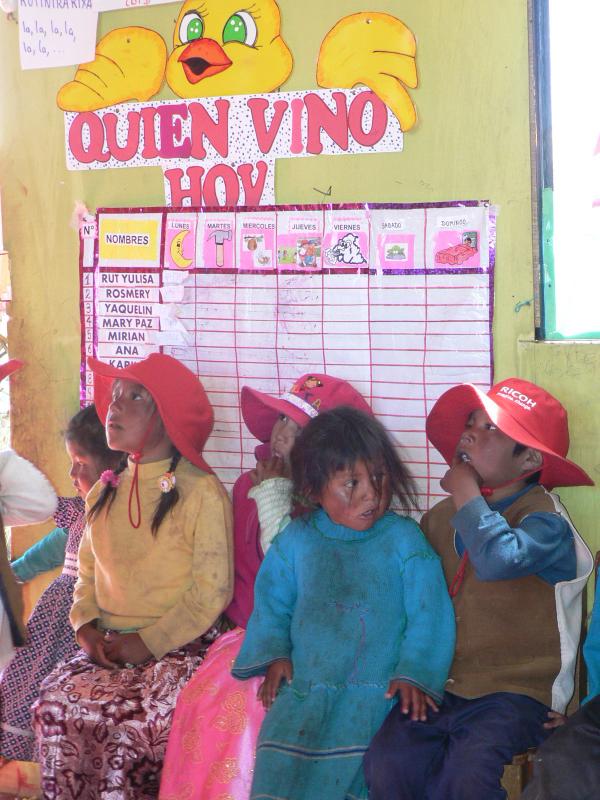
Children in preschool classroom. |
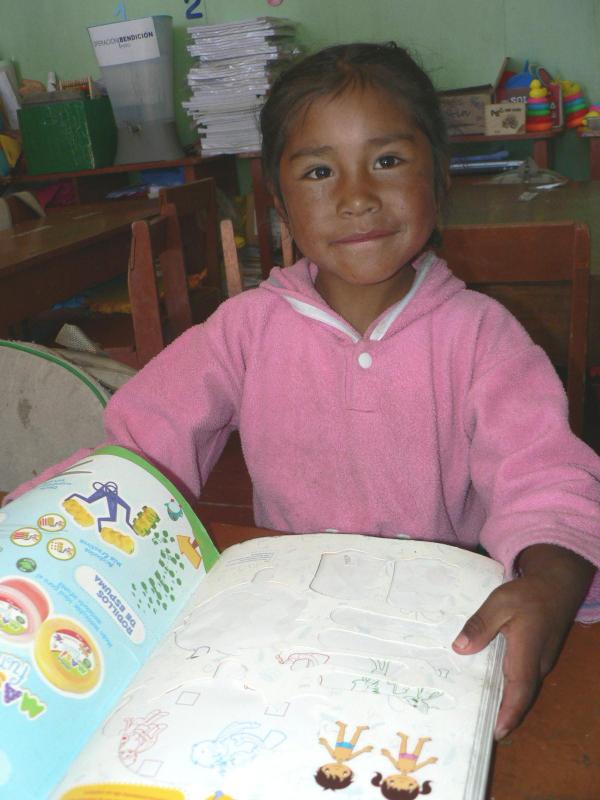
Reading is fun. |
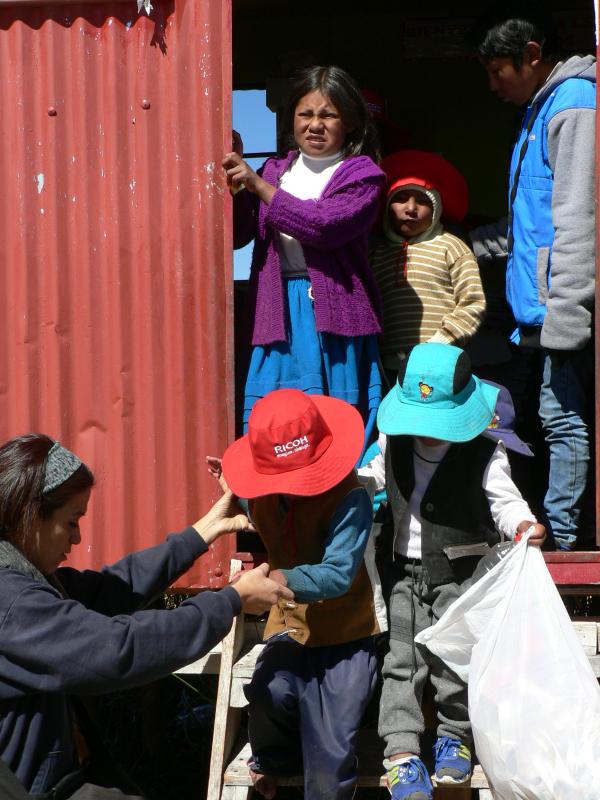
Exit from classrooms is via a ladder. |
|
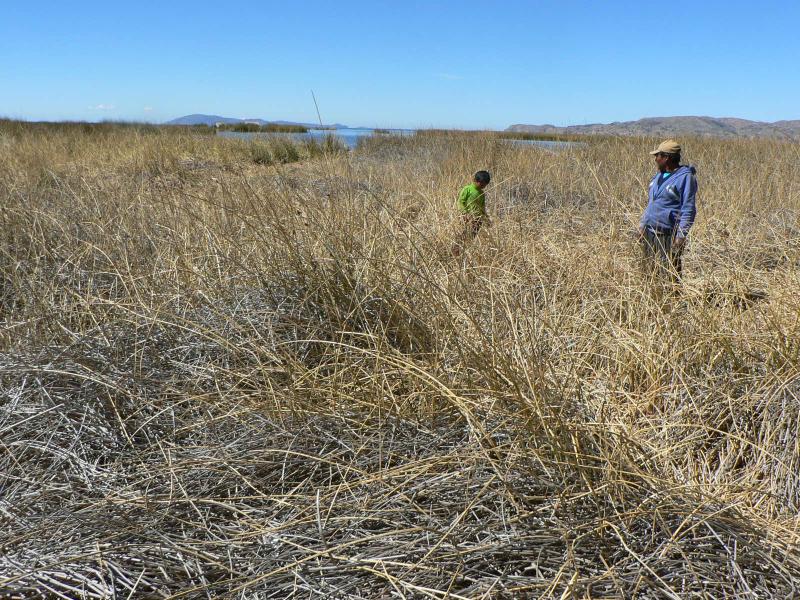 Site for building new preschool building & playing field. Site for building new preschool building & playing field. |
| |
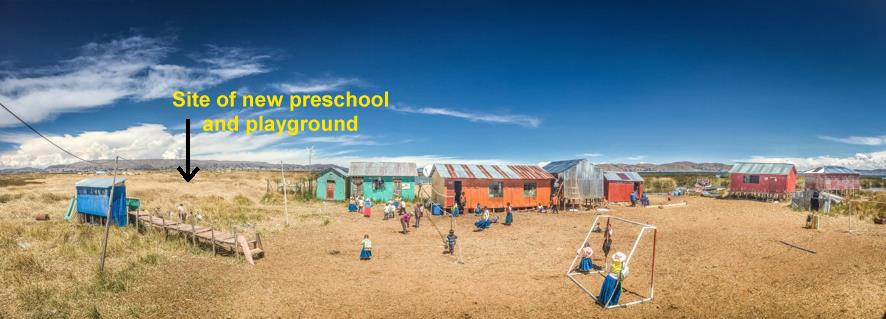 Panoramic view of Ccapi Uros School shows location of new preschool. The turquoise building is the current preschool. Panoramic view of Ccapi Uros School shows location of new preschool. The turquoise building is the current preschool. |
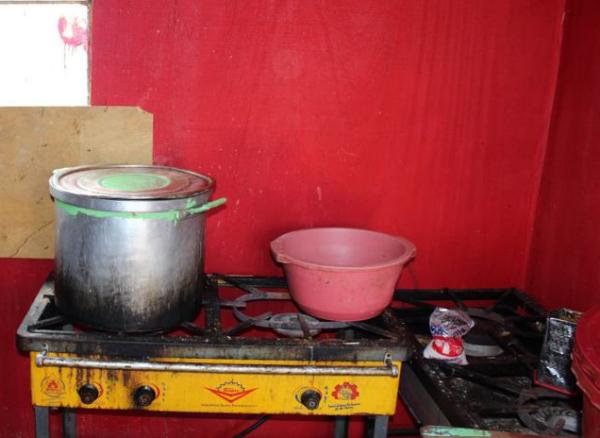 Current kitchen is inadequate and outmoded. Current kitchen is inadequate and outmoded. |
| |
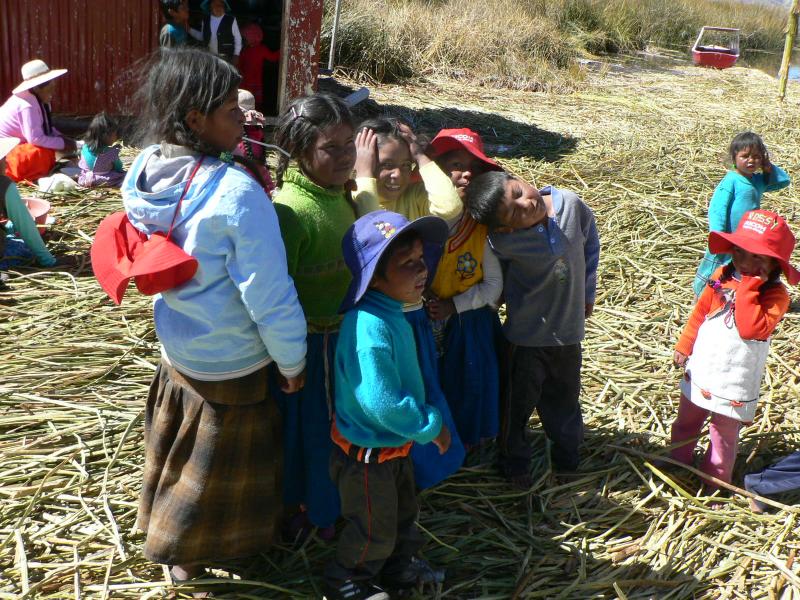 Kids are delighted to pose for a photo. Kids are delighted to pose for a photo. |
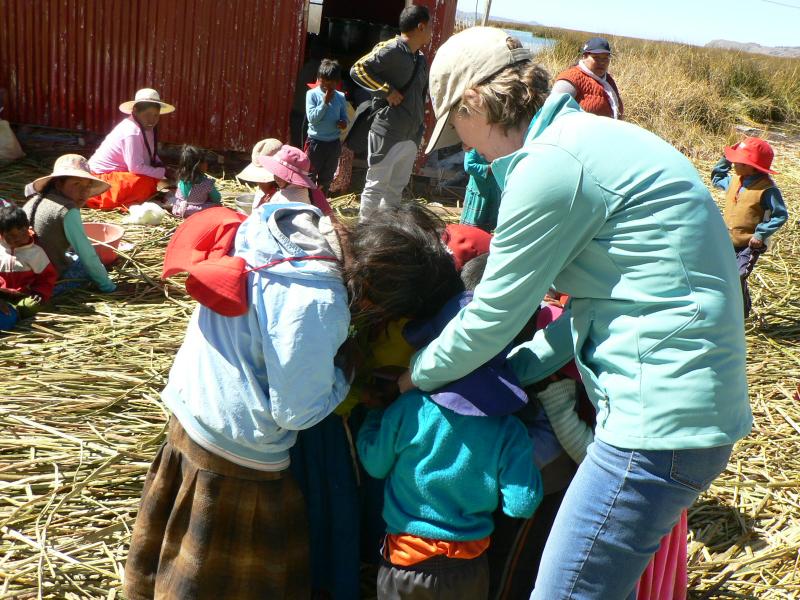 'Let's see the photo! Let's see the photo!' 'Let's see the photo! Let's see the photo!' |
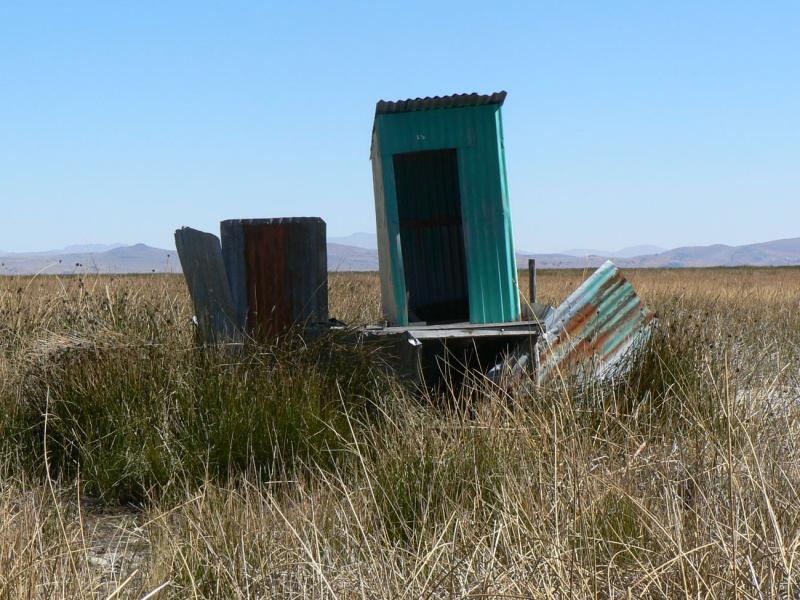 Outhouse is separate from the main buildings. Outhouse is separate from the main buildings. |
| |
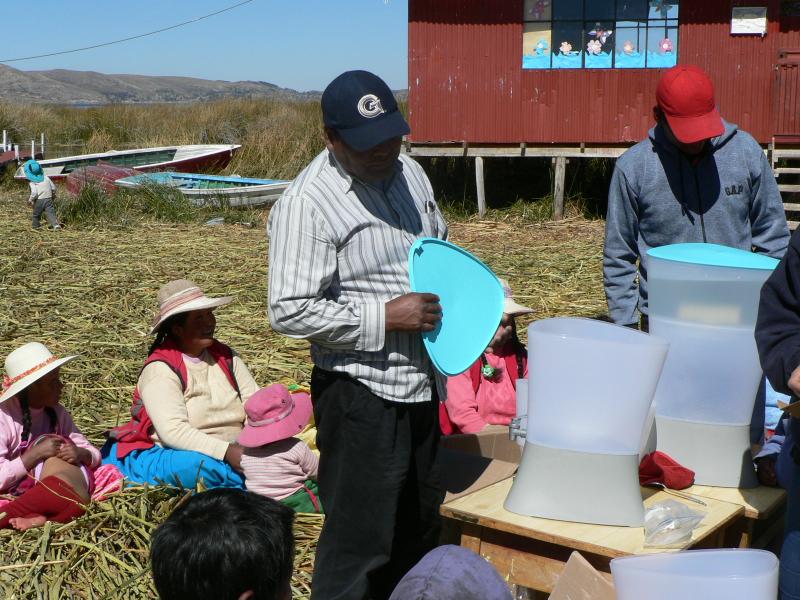
Operation Blessing gave water purification kits to Uros families. |
|
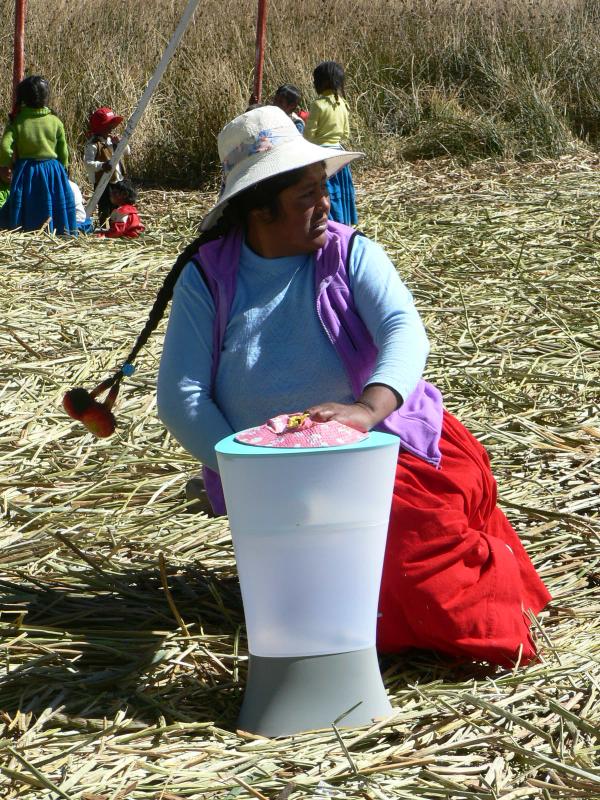 |
|
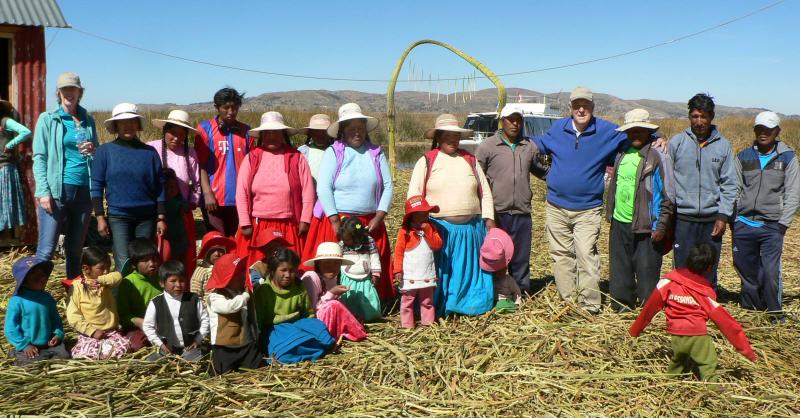
Uros people with Ronda Sherman and Sandra Arbaiza (Operation Blessing) and Dave Ahl. |
|

